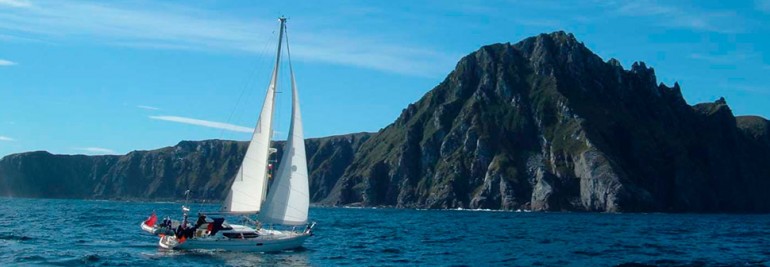Sponsored Listings:
Cape Horn is the southernmost point of South America. It is an island in the Tierra del Fuego, Chile. There are no ferries or day trips to this magical place or any no human settlements within almost 130km. Other than by private boat, the only way to reach it is to get on the Stella Australis cruise or its sister ship, Via Australis. The five-day Punta Arenas-Ushuaia trip on Stella Australis departures from September to April and costs about $2,325, including open bar on board and shore excursions.
In there you will enjoy the cleanest air, the clearest light, and constantly changing weather. A landscape of vivid blues, greens, and whites turns a dozen shades of grey as the sun is obscured by rain or sleet. This trip is also a great idea if you want to disconnect from the outside world, since you won´t probably have radio, television, mobile telephone service, or Wi-Fi.
Among the birds that can be spotted around Cape Horn is the Austral thrush, which is only 26 centimeters long. Its delicate markings include buff-colored feathers on the breast, a black head, neck and wings; a dark brown upper body, and a streaked throat. You will also spot a lot of penguins and an aquatic mammal that goes by many names, like the Panda, Skunk or Piebald dolphin, as well as Commerson’s dolphin.

Cape Horn is as drenched in history as it is in monstrous waves. The area has been a crossroads of civilization since the days of Magellan, who pioneered the journey around the Horn. On your journey, you will see Wulaia Bay and see the sunken earthen circles where the indigenous Yaghan people lived for 10,000 years until they were driven out by European settlers in the late 19th century.
The route around the Horn used to also be an important path for trade and passenger ships taking goods and people from the East Coast of the United States to the West Coast, and was an essential supply route for the Spanish Empire.
Navigating around the Cape was a near-impossible feat for sailors who braved its intense winds and treacherous waters in the 17th century. However, those fortunate enough to return were entitled to numerous benefits, including dining with one foot on the dinner table and wearing a gold loop earring to boast of their seafaring victory.
If you are like me and grew up with stories of the great navigators and of the violent seas around the Cape, then you will succumb to a sense of awe and drama as you finally witness the part of the world where two oceans seem to collide.
Sоurсе: latinamericanpost.com










